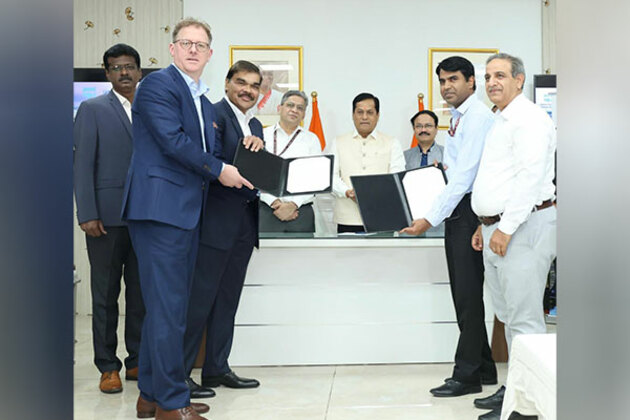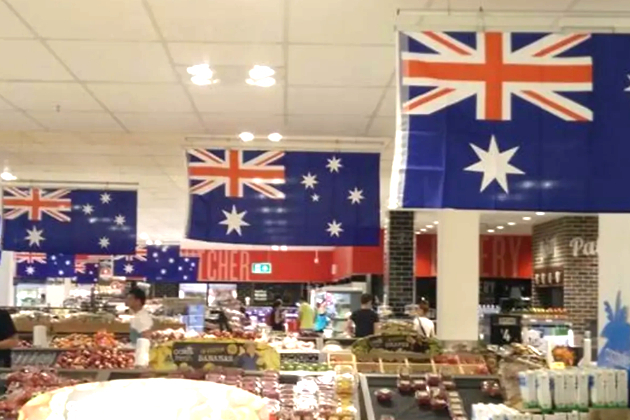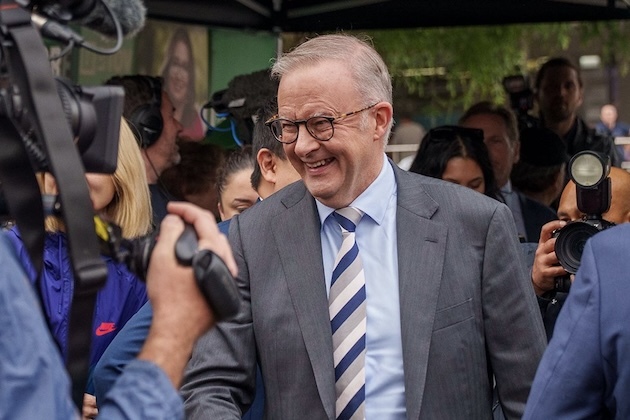Labor says its second term will be about productivity reform. These ideas could help shift the dial
The Conversation
07 May 2025, 05:26 GMT+10

In his victory speech, Prime Minister Anthony Albanese highlighted social policy as a major factor in Labor's electoral success, particularly Medicare, housing and cost of living relief. He was justified in doing so.
But looking forward, Treasurer Jim Chalmers named stalled productivity growth as a top priority for the next three years:
The best way to think about the difference between our first term and the second term ...[is] the first term was primarily inflation without forgetting productivity, the second term will be primarily productivity without forgetting inflation.
The government asked the Productivity Commission in December to develop five pillars of its productivity agenda and come up with actionable reforms. And for the first time, the commission went out and sought "productivity pitches" from anyone in the community.
Ahead of further reports due out later this year, those community "pitches" offer some clues about where the Albanese government might start to tackle productivity over the next three years and beyond.
Essentially, productivity is about working smarter, not harder. It's about efficiency and innovation driving more output for an economy or company. Growth in productivity has been the driver of real wage growth and improved living standards since the Industrial Revolution.
However, productivity performance has slumped across most advanced economies. In Australia, growth is the slowest in 60 years. This is despite the transformative impact of the internet and digital technologies.
Explanations of the productivity slowdown are many and varied. Some have suggested the growth of the care economy and the services sector more broadly means productivity is reduced. Others wonder whether it can be measured at all in this context.
The explanation that has gained most acceptance is that productivity has increased dramatically in "frontier firms" at the cutting edge of technological change and business innovation. The problem in Australia is that we have too few frontier firms and too many "laggard" companies. The rate of new technology adoption is too slow.
This problem is made more acute by Australia's trade and industrial structure, which is heavily weighted to resources exports rather than the knowledge-based industries of the future.
This is the rationale for the Treasurer's request in December for the Productivity Commission to identify priority reforms in five key areas. He asked for "actionable recommendations to assist governments to make meaningful and measurable productivity-enhancing reforms".
The five pillars are:
These are ambitious objectives, and the Productivity Commission is pursuing the review task in a different way from the past by seeking ideas directly from the community through crowd sourcing.
This is a sensible move, especially given the commission's role in presiding over Australia's productivity decline. Perhaps they are finally learning from failed experiments in deregulation, privatisation and contracting out.
The commission has published a selection of the 500 suggestions it received. These include research and development initatives; improving university collaboration with industry; improving management capabilities and building inclusive workplaces; and reforming skilled migration.
In the technology area, suggestions included developing internal capability and processes in the public service; making more use of artificial intelligence; and improving digital infrastructure in regional areas.
In the care economy, pharmacists could play an increased role, such as consulting on minor illnesses, while more could be invested in preventative health.
The fifth area of focus, the energy transition, produced ideas on streamlining state and federal approval processes for net zero projects; increasing fossil fuel taxes; supporting electric vehicle uptake and vehicle-to-grid technology.
The commission has said it plans to continue the consultation process and release interim reports mid-year.
The question remains, will these individual measures on their own, however meritorious, be sufficient to shift the dial on Australia's productivity performance without a more comprehensive approach to innovation and industrial policy?
The government set up a "strategic examination" of research and development (R&D) in February. An interim discussion paper found links between the decline of productivity growth, the decline of business spending on R&D, and the decline of manufacturing.
In other words, reversing the productivity slowdown may not simply be a matter of boosting R&D. It will also require the revival and reinvention of manufacturing. It implies a complex sovereign capability and means for diversifying Australia's export mix in global markets and value chains.
This is the purpose of the government's Future Made in Australia strategy, with its twin objectives of economic resilience and net zero transition. That success in turn depends on the development of a more effective and joined up research and innovation system.
The chance was missed in the commodity boom to design and deliver overdue structural changes in the Australian economy. Instead, the productivity decline was masked by a terms-of-trade boost to our national income, thanks to higher commodity prices.
The Albanese government's second and possibly third term in office provides another opportunity to undertake the major structural changes required to secure Australia's future as an inclusive and dynamic knowledge-based economy. Surely this one will not be missed.
 Share
Share
 Tweet
Tweet
 Share
Share
 Flip
Flip
 Email
Email
Watch latest videos
Subscribe and Follow
Get a daily dose of Perth Herald news through our daily email, its complimentary and keeps you fully up to date with world and business news as well.
News RELEASES
Publish news of your business, community or sports group, personnel appointments, major event and more by submitting a news release to Perth Herald.
More InformationInternational Business
SectionChina to cut policy rate by 0.1 percentage points from Thursday
BEIJING, May 7 (Xinhua) -- China's central bank announced on Wednesday to cut the rate for the seven-day reverse repos by 0.1 percentage...
India's growth cycle is likely to improve despite global uncertainty: HSBC MF
New Delhi [India], May 7 (ANI): India's economic growth is on the path to recovery, supported by multiple positive factors, even as...
IWAI signs MoU with global giant Rhenus Logistics India to push cargo growth on national waterways
New Delhi [India], May 6 (ANI): Inland Waterways Authority of India (IWAI) under the Ministry of Ports, Shipping and Waterways (MoPSW)...
DFM, TWSE sign MoU to strengthen cross-border financial cooperation
DUBAI, 6th May 2025 (WAM) -- The Dubai Financial Market (DFM) and Taiwan Stock Exchange (TWSE) have signed a Memorandum of Understanding...
DFM introduces AI insights to iVestor to simplify company disclosures
DUBAI, 6th May, 2025 (WAM) -- Dubai Financial Market (DFM) today announced the launch of two new AI-powered features on its iVestor...
Share of gold in RBI's forex kitty doubled since 2021
New Delhi [India], May 6 (ANI): Central banks world over are increasingly accumulating safe-haven gold in their foreign exchange reserves...
Australia
SectionAustralian police and partners smashing drug cartels
Every day, police across Australia investigate thousands of incidents—any one of which could unlock a major case on the other side...
Australia inflation hits 3-year low, boosting rate cut hopes
SYDNEY, Australia: A key measure of inflation in Australia has cooled to its lowest level in three years, lending weight to expectations...
Anthony Albanese returned as Australian prime minister
SYDNEY, NSW, Australia - The Australian Labor Party has been swept to victory for a second term after defeating the Coalition in an...
India-UK Free Trade Agreement (FTA) a historic and comprehensive deal
New Delhi [India] May 7 (ANI): The India-UK Free Trade Agreement (FTA0, signed on Tuesday May 6th 2025, after nearly three years of...
InPics | AFC Women's Futsal Asian Cup 2025 kicks off in Hohhot
HOHHOT, May 7, 2025 (Xinhua) -- 2025 AFC Women's Futsal Asian Cup kicks off in Hohhot, north China's Inner Mongolia Autonomous Region,...
Labor says its second term will be about productivity reform. These ideas could help shift the dial
In his victory speech, Prime Minister Anthony Albanese highlighted social policy as a major factor in Labor's electoral success, particularly...












